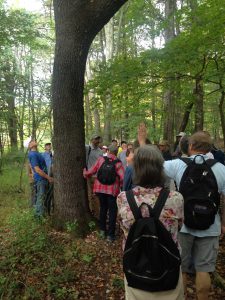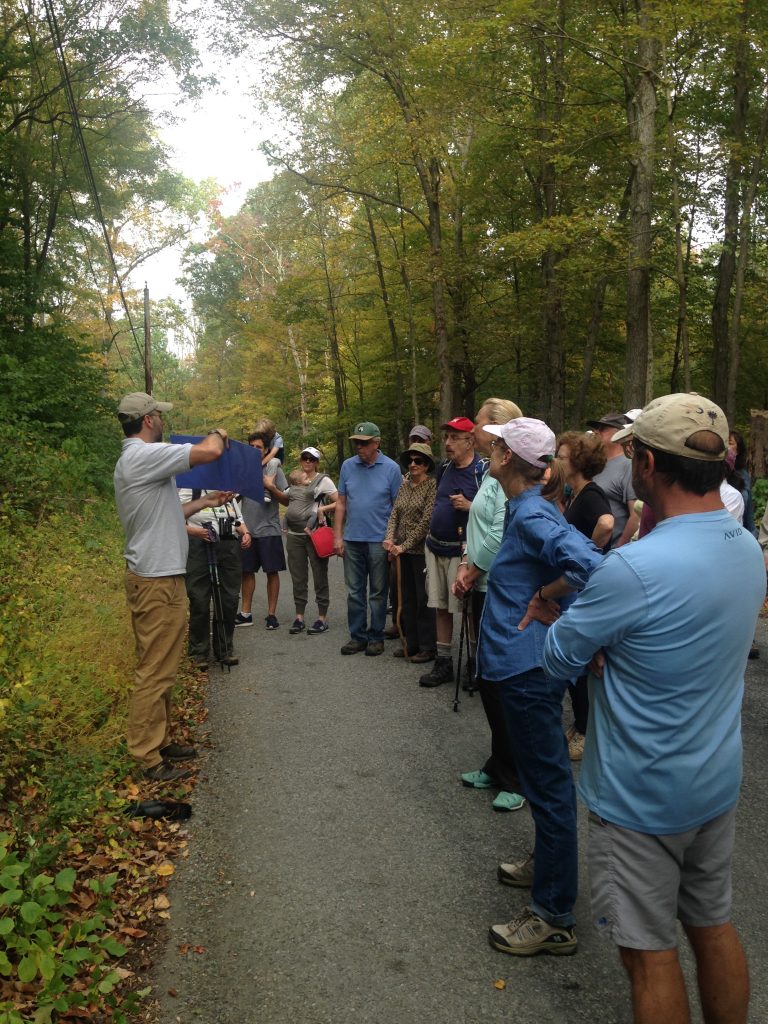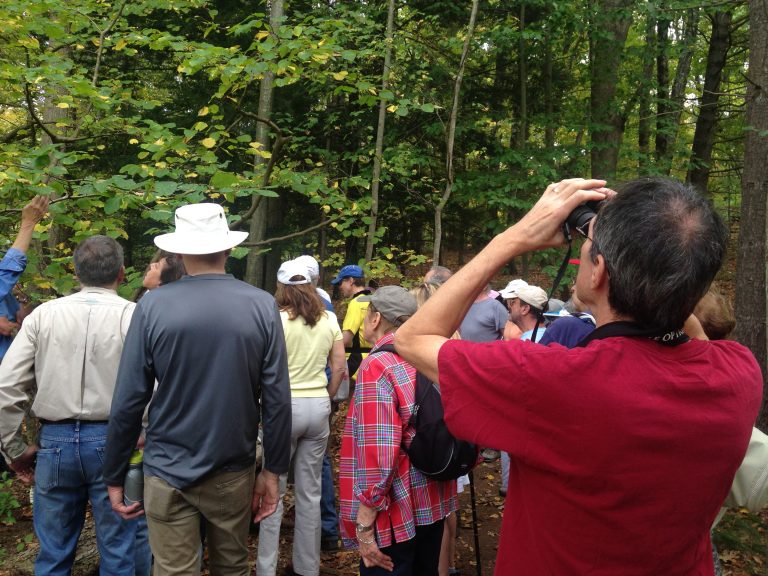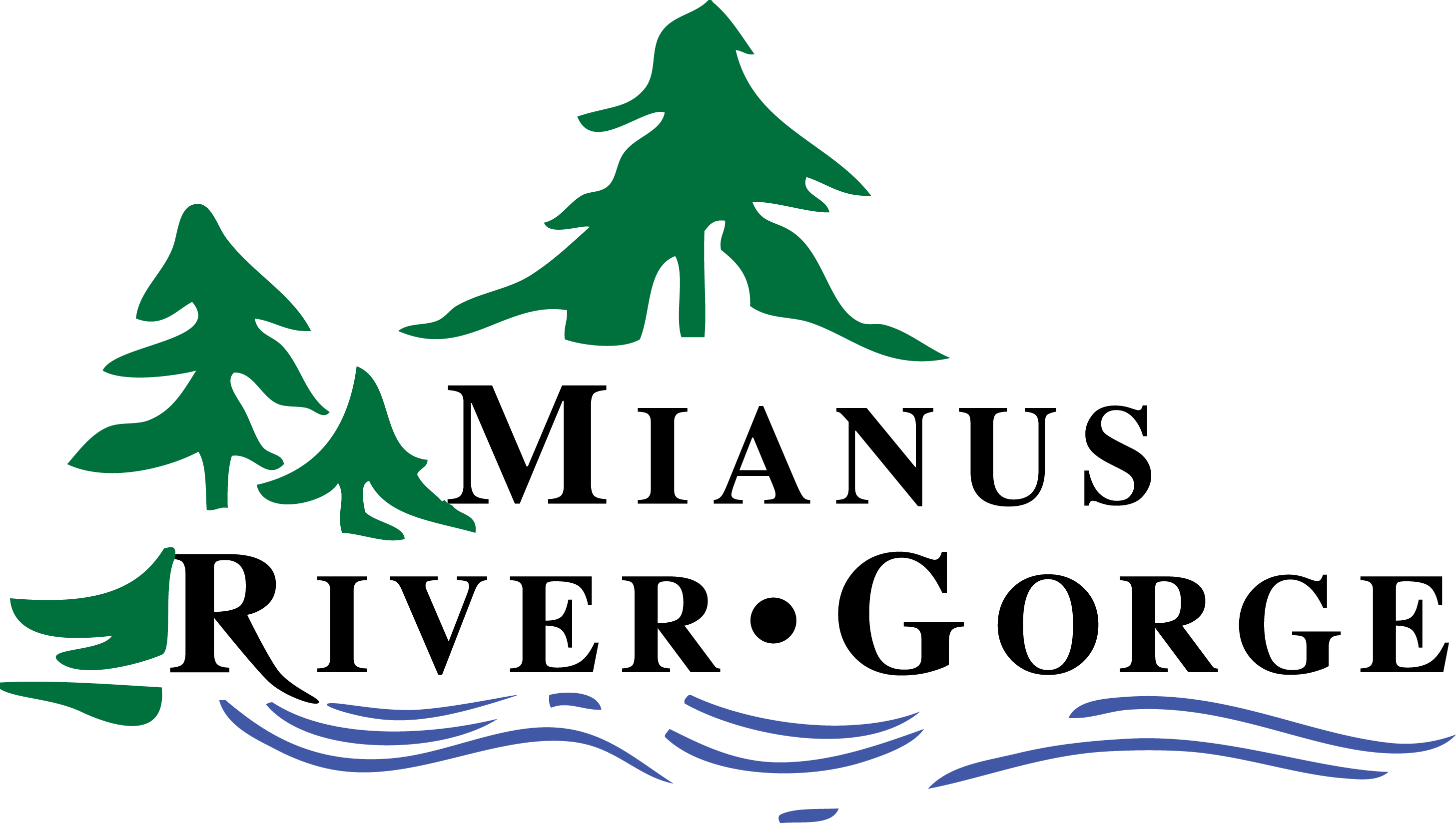Saturday, October 7, was a gorgeous day in the Gorge to learn about trees. MRG Preserve Manager & Staff Biologist Budd Veverka shared his wealth of knowledge with 35 tree enthusiasts during a “Tree ID” walk. We looked at leaves, bark, and the fruit of more than 20 different species of trees and shrubs, from American Basswood to Witch Hazel … from Pig Nut Hickory to Slippery Elm … from Black Cherry to Black Oak. Budd demonstrated the difference among asymmetric base leaves, double-serrated leaves, the “cat ear” leaves on Tulip Poplars, and more. He shared samples of different types of acorns, chestnuts, and hickory nuts.
We looked at bark that is shaggy (Shag Bark Hickory), plate-like (Chestnut Oak), patchy (Sycamore), a little flaky (Yellow Birch), and one that looks like “dinosaur skin” (Red Cherry).

Budd pointed out the trees that are dominant in different types of forest settings, including Beech, Red Maple, and Hemlock. We learned how to tell a White Pine from a Red Pine and whether deer prefer the acorns from Chestnut Oak, White Oak, Red Oak, or Black Oak. (They prefer White Oak acorns because they’re the meatiest and have thinner shells.)



Learning to identify trees isn’t as easy as you might think! But, with a little practice and a good guidebook, such as Eastern Trees (Peterson Field Guides) or The Sibley Guide to Trees, you might be able to tell a Sugar Maple from a Red Maple from a Norway Maple! You also can arrange a Wildlife & Habitat Consultation with Mianus River Gorge, and Budd will help you determine exactly what’s what in your own backyard.
